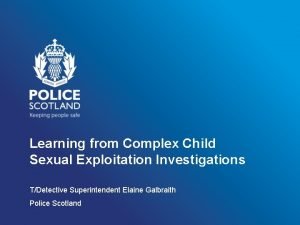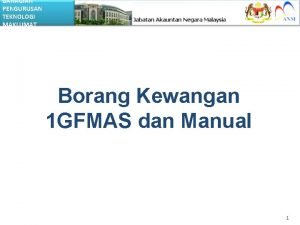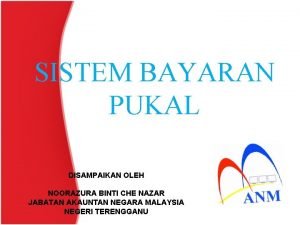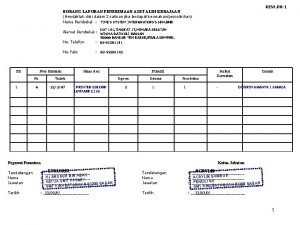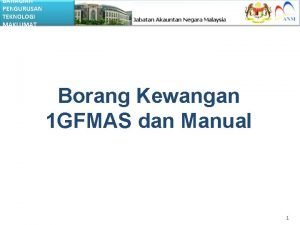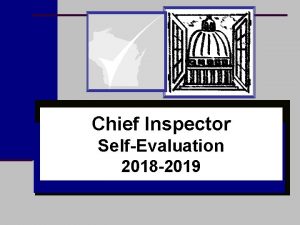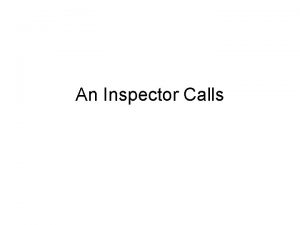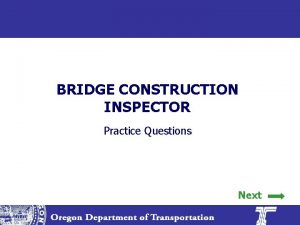TDetective Chief Inspector Jason Kew What are the



























- Slides: 27

T/Detective Chief Inspector Jason Kew What are the Police doing about drug related deaths?


What’s the real damage • Drug related deaths are at the highest recorded level UK - 5543 (ONS) • Around 1 in 11 adults aged 16 -59 used a controlled drug in the past year (ONS) • Around 1 in 5 (20%) of 16 to 24 yr olds used a controlled drug in the past year – That’s 1. 3 million people (ONS) • 14% increase between 2015/16 and 2016/17 in the number of people presenting to treatment for crack cocaine problems in England (Source: NHS digital / NPCC) • In excess of 40 k people arrested in the UK for possession offences (Mo. J) • There approx. 300 k people registered with Heroin addiction (PHE) • A black person, is 11. 8 times more likely to be convicted of possessing cannabis than a white person (Release drugs, Stopwatch, LSE - colour of injustice)

STIGMA KILLS https: //www. youtube. com/watch? v=bd. E 5 k. TLve 30 https: //www. bbc. co. uk/bbcthree/clip/2173 a 7 da-c 8 e 1 -42 a 9 -b 9 d 6 e 094614 ff 776

Current Approach • Current strategy of prohibition aims to protect public health, prevent harm to others, prevent the spread of crime with associated drug use, this is not working as drugs are more and more readily available (Clutterbuck, 1995; UK Drug Policy Commission, 2008; Albrecht & Ludwig-Mayerhofer, 2011). • The penalties associated with prohibition are in place to act as a deterrent. The more harmful the drug, the greater the penalty, the greater the deterrent to possession (Husak & De Marneffe, 2005). • Proponents of prohibition argue that a more tolerant approach to drugs would make it more socially acceptable, which would lead to an increase in usage (Van Dijk, 1998; Korf, 2002). • The government 2017 evaluation of the ‘Drug Strategy 2010’ surmised that: “there is, in general, a lack of robust evidence as to whether capture and punishment serves as a deterrent for drug use”

• The deterrent has already failed for those found in possession of controlled drugs. • When dealt with by way of warning, caution of fine in court, the users do not receive assistance to help them stop using drugs. WHY DO WE ARREST? • Furthermore, there is evidence to suggest that rather than deter persons from further drug use, the stigmatisation of a criminal record marginalises and prevents their reintegration back into society (Collinson, 1993; Buchanan & Young, 2009)

Portugal – 39 / United Kingdom - 5546


Person in possession of any drug – Not age specific Drug service provides feedback of attendance ie to avoid people taking advantage Seize drug Check PNC Record ‘crime’ Now Engage Person voluntarily attends education/treatment at drug service (outreach is key) Diversion booked via an app direct to local drug service A community resolution applied Safeguarding Intel interview Additional Offences? Diversion is not decriminalisation, although a community resolution is invisible to a standard DBS check (Lammy 2016). Unlimited opportunities for diversion. A gateway for assessment, education/treatment/intervention pathways where appropriate and better outcomes for people found with drugs.

Officer feedback • “I thought it was a good scheme when the training was delivered (& I can be cynical enough about a couple of things we’ve had over the years!)…. I thought it was pretty straight forward and I would definitely use it again. ” (Case 20) • “It’s really easy and simple to use. So much quicker than what I would have had to do otherwise…. I would have had to send the drugs off for testing, RUI’d him, it would have been on my screen for 8 weeks. This was really easy. I like it. ” (Case 2) • “I have used this a couple of times now…. I have found it really easy and quick. I have also had a thank you from a detainee that I dealt with to say he was sorry for his arrest and feels he was treated fairly. ” (Case 24)

Officer feedback “Recently in West Berkshire I have noticed a decrease in County line activity and in my opinion the diversion scheme is a contributing factor in lowering the demand for Class A drugs, along with other factors such as house closures and pursuit of the suppliers. I have been speaking with local Class A drug users some of who appear to be in recovery and some, who are using drugs considerably less. I have noticed the community have also been discussing those who have managed to get clean and I believe it is encouraging others to seek treatment. The diversion scheme I would suggest is assisting in rapport building within the sub culture as the Police are no longer criminalizing those most at risk and in return it creates a hostile environment to those supplying as the community offer up information to assist law enforcement to reduce the temptation on the street”. (case 26)

Naloxone Distributions Data Period April 2017 – March 2019 NB: SCAS data only covers Thames Valley and Hampshire (not including the Isle of Wight) Portsmouth and Southampton are the Districts seeing the highest number of naloxone distributions. When taking populations into account, the districts of Oxford and Winchester also feature highly. 2136 Incidents District (Sorted by # person) Portsmouth Southampton Oxford Winchester Gosport Basingstoke and Deane Milton Keynes Reading Fareham New Forest Test Valley Eastleigh Havant Cherwell West Berkshire Aylesbury Vale East Hampshire Slough Wycombe Vale of White Horse Windsor and Maidenhead West Oxfordshire Wokingham South Oxfordshire Bracknell Forest South Bucks Chiltern Hart Rushmoor # of Incidents 323 307 142 88 56 114 169 95 54 83 57 60 55 53 54 65 37 45 50 37 40 28 39 31 26 11 13 4 0 2017 Population 214, 718 252, 359 154, 582 123, 789 85, 509 175, 337 267, 521 163, 075 116, 219 179, 590 123, 957 130, 498 125, 065 147, 602 158, 473 196, 020 119, 392 148, 768 174, 758 131, 227 150, 140 109, 266 164, 980 139, 767 120, 377 69, 785 95, 355 188, 484 95, 817 # per 1, 000 person 1. 50 1. 22 0. 92 0. 71 0. 65 0. 63 0. 58 0. 46 0. 44 0. 36 0. 34 0. 33 0. 31 0. 30 0. 29 0. 28 0. 27 0. 26 0. 24 0. 22 0. 16 0. 14 0. 02 n/a


Heroin assisted treatment - UK RIOTT trials – Evidenced that the heaviest heroin using 10 to 15% consumed 50 to 66% of illicit street heroin - By prescribing medical diamorphine to this group (127) crime reduce - 30 days prior to entering treatment there were 3907 unrecorded crimes committed by this group - The total number of crimes committed in the 30 days prior to the six month interview had reduced in all groups to a total of 849 (78%)




The Homeless man…. What the nurse described… and what the Police say…

Supervised injection facilities • • • What are they? = safe spaces Why do communities need them? Political position – Honeypot effect? How do you Police them? – Diversion? Legal position – S 8 MDA, S 44, 45, 46 SCA Public interest test? Mo. U? Lawfully audacious

Thank you… But… Please don’t listen to me! Listen to the evidence… Together, we need to act now. . Support not punish

Bibliography • Albrecht, G. , & Ludwig-Mayerhofer, L. (2011). Diversion and Informal Social Control. Berlin: De Gruyter Inc. • Bean, P. (2014). Drugs and Crime. London: Routledge. • Best, D. H. (2003). Getting by with a little help from your friends: The impact of peer networks on criminality in a co hort of treatmentseeking drug users. Addictive Behaviours, 597 -603. • Buchanan, J. , & Young, L. (2009). The War on Drugs - a war on drug users? Drugs: Education, Prevention and Policy, 409 -422. • Caulkins, J. , & Kleiman, M. (2011). Drugs and Crime. In M. Tonry, The Oxford Handbook of Crime and Criminal Justice (pp. 275 -320). Oxford: Oxford University Press.

References • Clausen, T. S. (2017). Similarities and differences in victimization risk factors for nonoffending and offending substance users. Victims and Offenders: An internation journal of evidence-based research, policy and practice. • Clutterbuck, R. (1995). Drugs, Crime and Corruption: Thinking the Unthinkable. London: Palgrave Macmillan Limited. • Collinson, M. (1993). Punishing Drugs. British Journal of Criminology, 382 -399. • Engelsman, E. (1989). Drug policy and the management of drugrelated problems. British Journal of Addictions, Vol. 84, 211 -218.

References • French, M. M. (2015). Low self-control and the victim - offender overlap a gendered analysis. Journal of Interpersonal Violence, 2076. • Greenwald, G. (2009). Drug Decriminalisation in Portugal. Washington: Cato Institute. • HM Government. (2017, August 30). An evaluation of the Government's Drug Strategy 2010. Retrieved from www. gov. uk: https: //www. gov. uk/government/publications/understanding-organisedcrime-estimating-the-scale-and-the-social-and-economic-costs • Hughes, C. (2009). Capitalising upon political opportunities to reform drug policy: A case study into the development of the Australian "Tough on Drugs-Illicit Drug Diversion Initiative 2. International Journal of Drug Policy, Vol. 20, No. 5, 432 -437.

References • Husak, D. (2003). Four Points about Drug Criminalization. Criminal Justice and Ethics, 3 -11. • Husak, D. , & De Marneffe, P. (2005). The Legalization of Drugs. Cambridge: Cambridge University Press. • I. , S. , Clausen, T. , Skurtveit, S. , Abel, K. , & Bukten, A. (2017). Similarities and differences in victimization risk factors for nonoffending and offending substance users. . Victims and Offenders, 1 -16. • Korf, D. (2002). Dutch coffee shops and trends in cannabis use. Addictive Behaviours, Vol. 27, No. 6, 851 -866.

References • NHS. (2017, August 10). ‘Alcohol and Drugs Prevention, Treatment & Recovery - Why Invest? ’. Retrieved from Public Health England: http: //www. nta. nhs. uk/uploads/alcoholanddrugswhyinvest 2015. pdf • Oteo, P. B. (2015). Criminal involvement and crime specialization among crack users in the Netherlands. European Addiction Research, 53 -62. • Polk, K. , Alder, C. , Muller, D. , & Rechtman, K. (2005). Early intervention: Diversion and Youth Conferencing: A national profile and review of current approaches to diverting juveniles from the criminal justice system. Canberra: Australian Government Attorney-General's Department. • Public Health England. (2017, January). HM Government. Retrieved from An Evidence Review of the outcomes that can be expected of drug misuse treatment in England: https: //www. gov. uk/government/uploads/system/uploads/attachment_d ata/file/586111/PHE_Evidence_review_of_drug_treatment_outcomes. pdf

References • Ruback, R. , & Clark, V. W. (2013). Why are crime victims at risk of being victimized again? Substance use, depression, and offending as mediators of the victimization-revictimization link. Journal of Interpersonal Violence, 159 -185. • Stevens, A. B. (2007). The victimization of dependent drug users findings from a European study. European Journal of Criminology, 385 -408. • UK Drug Policy Commission. (2008). The UK drug classifcation system: issues and challenges. Retrieved from UK Drug Policy Commission: www. ukdpc. org. uk/wp-content/uploads/Briefing%20 -

References • UK Treasury. (2015). Treasury Cannabis Regulation. Retrieved from Treasury: www. tdpf. org. uk/sites/default/files/Treasury-cannabisregulation-CBA. pdf • Van de Wijngaart, G. (1991). Competing perspectives on drug use. Amsterdam: Swets and Zeitlinger. • Van Dijk, J. (1998). The narrow margins of the Dutch drug policy: A cost-benefit analysis. Netherlands: European Journal on Criminal Policy and Research.
 Tdetective
Tdetective Antigentest åre
Antigentest åre Lesson 3 commander in chief and chief diplomat
Lesson 3 commander in chief and chief diplomat Borang kew.8-pin.10 96 kosong
Borang kew.8-pin.10 96 kosong Contoh cek tak laku
Contoh cek tak laku Buku resit kew 38
Buku resit kew 38 Borang pukal kew 310
Borang pukal kew 310 Borang laporan penerimaan aset
Borang laporan penerimaan aset Kew 6315
Kew 6315 Gabenor jeneral british shti di india
Gabenor jeneral british shti di india Marcelo
Marcelo Borang kew.8-pin.10 96 kosong
Borang kew.8-pin.10 96 kosong Faktor yang memudahkan shti menduduki pulau pinang
Faktor yang memudahkan shti menduduki pulau pinang Cuti sambilan 14 hari
Cuti sambilan 14 hari Thẻ vin
Thẻ vin Cái miệng bé xinh thế chỉ nói điều hay thôi
Cái miệng bé xinh thế chỉ nói điều hay thôi Các châu lục và đại dương trên thế giới
Các châu lục và đại dương trên thế giới Bổ thể
Bổ thể Từ ngữ thể hiện lòng nhân hậu
Từ ngữ thể hiện lòng nhân hậu Tư thế ngồi viết
Tư thế ngồi viết Diễn thế sinh thái là
Diễn thế sinh thái là Thế nào là giọng cùng tên
Thế nào là giọng cùng tên Làm thế nào để 102-1=99
Làm thế nào để 102-1=99 Thơ thất ngôn tứ tuyệt đường luật
Thơ thất ngôn tứ tuyệt đường luật Hát lên người ơi
Hát lên người ơi Hươu thường đẻ mỗi lứa mấy con
Hươu thường đẻ mỗi lứa mấy con đại từ thay thế
đại từ thay thế Vẽ hình chiếu vuông góc của vật thể sau
Vẽ hình chiếu vuông góc của vật thể sau
